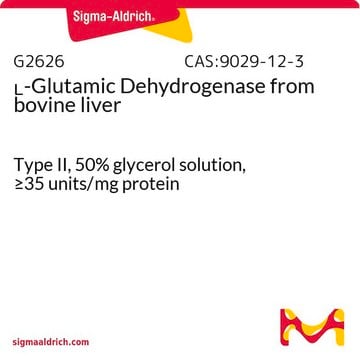추천 제품
생물학적 소스
Porcine brain
Quality Level
분석
≥85%
형태
powder
solubility
water: 50 mg/mL, clear, colorless to faintly yellow
저장 온도
−20°C
SMILES string
CC(=O)c1ccc[n+](c1)[C@@H]2O[C@H](COP([O-])(=O)OP(O)(=O)OC[C@H]3O[C@H]([C@H](O)[C@@H]3O)n4cnc5c(N)ncnc45)[C@@H](O)[C@H]2O
InChI
1S/C22H28N6O14P2/c1-10(29)11-3-2-4-27(5-11)21-17(32)15(30)12(40-21)6-38-43(34,35)42-44(36,37)39-7-13-16(31)18(33)22(41-13)28-9-26-14-19(23)24-8-25-20(14)28/h2-5,8-9,12-13,15-18,21-22,30-33H,6-7H2,1H3,(H3-,23,24,25,34,35,36,37)/t12-,13-,15-,16-,17-,18-,21-,22-/m1/s1
InChI key
KPVQNXLUPNWQHM-RBEMOOQDSA-N
관련 카테고리
일반 설명
애플리케이션
생화학적/생리학적 작용
결합
신호어
Warning
유해 및 위험 성명서
Hazard Classifications
Eye Irrit. 2 - Skin Irrit. 2 - STOT SE 3
표적 기관
Respiratory system
Storage Class Code
11 - Combustible Solids
WGK
WGK 3
Flash Point (°F)
Not applicable
Flash Point (°C)
Not applicable
시험 성적서(COA)
제품의 로트/배치 번호를 입력하여 시험 성적서(COA)을 검색하십시오. 로트 및 배치 번호는 제품 라벨에 있는 ‘로트’ 또는 ‘배치’라는 용어 뒤에서 찾을 수 있습니다.
이미 열람한 고객
자사의 과학자팀은 생명 과학, 재료 과학, 화학 합성, 크로마토그래피, 분석 및 기타 많은 영역을 포함한 모든 과학 분야에 경험이 있습니다..
고객지원팀으로 연락바랍니다.









